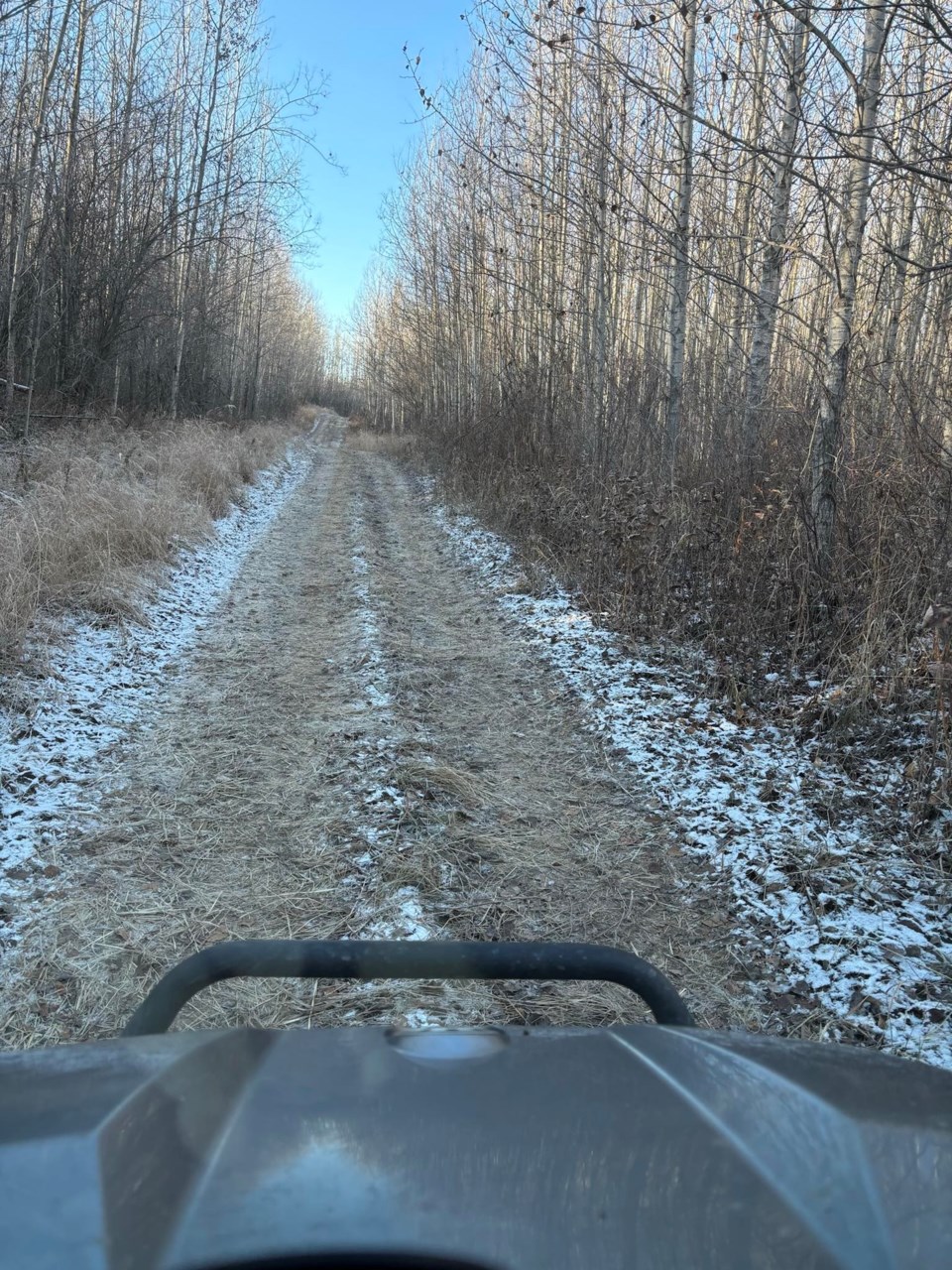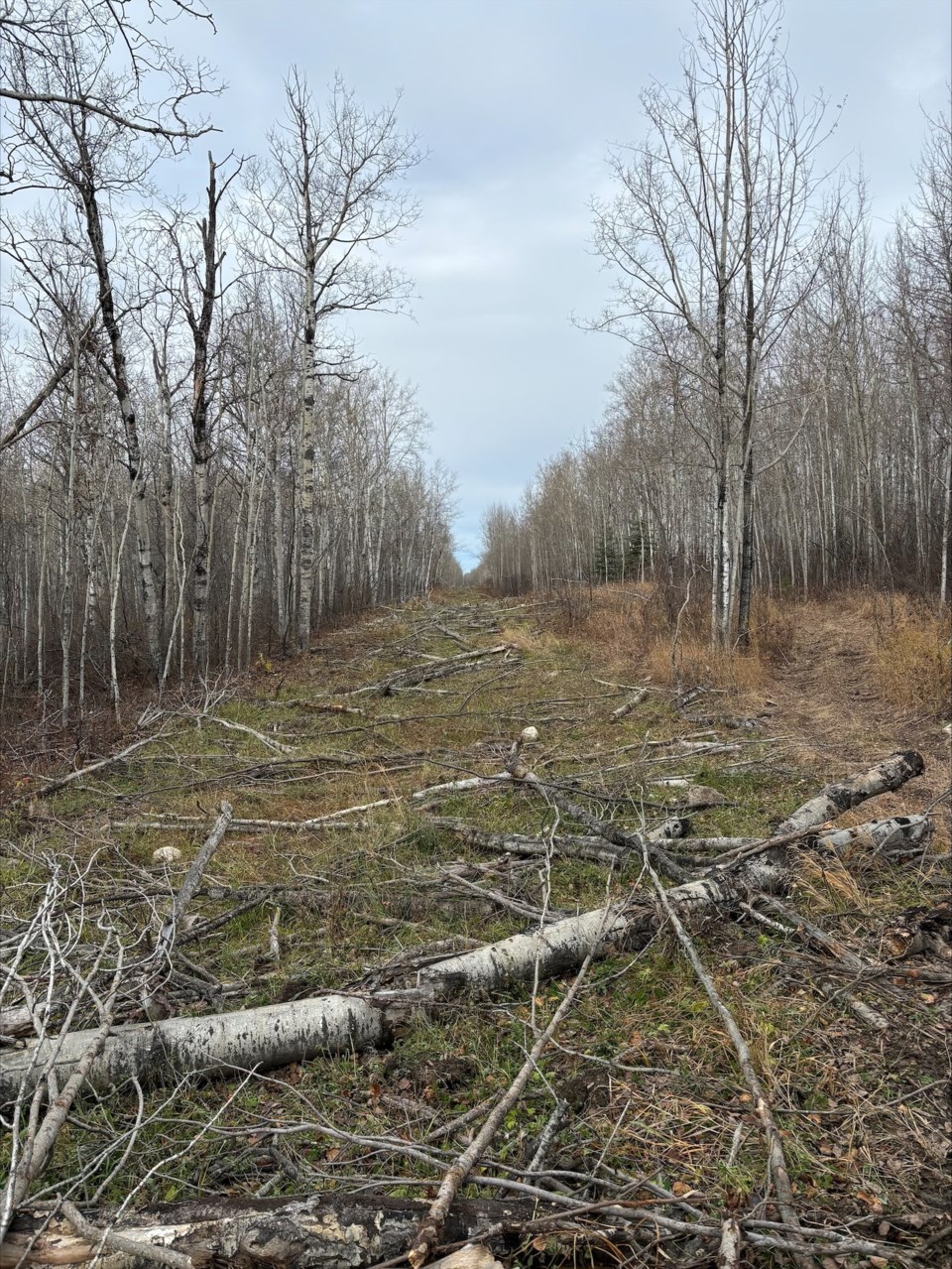BOYLE — The landscape of Alberta is vast and varied; from the immense swaths of towering pine and spruce that make up the boreal forest, to the jagged, snow-capped mountains to the south and west and everything in between, the province’s natural attributes are one of its greatest resources.
In 2023, tourism in the province raked in a record-setting $12.7 billion, an increase of 19 per cent over revenue collected in 2022. And although the Northern Alberta village of Boyle isn’t home to mountain views like Banff and Jasper, the area does see a significant influx of both in and out of province visitors who come for hunting, fishing, camping, exploration, and more.
But concerned community members have raised the alarm about one aspect of Boyle’s natural assets that are in jeopardy: a well-established network of back country crown land trails used year-round by locals, visitors, and outdoor enthusiasts of all kinds.
“It looks like Paramount (Resources) has been contracted out to reclaim some of the old oil leases that have been in place for several years, if not decades,” said Jason Mills, an avid user of the trail system and resident of Fort McMurray.
Mills, who heads up the Wood Buffalo Recreational Riders Association, said local users of the trails who first noticed former stretches of pathways torn up and strewn with debris close to a year ago reached out to him for help raising awareness.
“I don’t know how many kilometres were lost to reclamation of this type, but it’s back again this year,” said Mills. “The less trails we have, then we just get squeezed out of the area and we won’t have that access.”
“It’s really hard to regain all these trails that have been worked on by people in their free time, their volunteer time,” he added. “It’ll be lost when they reclaim this land if they go ahead with 100 per cent of it.”

Mark Stanton, long-time resident of Bondiss, frequent user of the trials, and former oilfield employee said the trails are directly tied to the remnants of extraction activity on the lands between Caslan, Bondiss and Amisk, Chump and North Buck lakes.
“A majority of the trails in that area were originally built by oilfield companies,” said Stanton. “Temporary roadways to go to the drill leases; at the time it was all natural gas drilling.”
According to Stanton, a number of lease allowances in the area have origin dates as far back as the 1950s and have been repurposed as backcountry travel routes for ATVs, snowmobilers, hunters, fishermen, and equestrians as lease activity stopped.
And now that the well-established system is at risk of disappearing, Stanton and other users are searching for potential solutions.
“What it would mean to us is the loss of access to the backcountry,” he said. Although he’s not a hunter, Stanton enjoys taking in the scenic beauty of his backyard.
“You go out there and you see a moose, you see a deer as you’re driving by and you appreciate that — people get a chance to see wildlife. Also, you get to the see the countryside. If we didn’t have these trails, we would be stuck to highways and county roads.”

Beyond an appreciation for the wild wonders of the land, Stanton is aware of the economic impacts the loss of the trails could mean for the area. Local lake communities are home to seasonal residents who spend the warmer months in the region, and visitors eager to enjoy the outdoors spend their money at Boyle’s gas stations, grocery stores and restaurants.
Both Stanton and Mills pointed to emergency access as another con to the ongoing reclamation activity. Reclaimed trails become largely impassable, blocked by solid chunks of soil and chopped down trees, potentially preventing access in the case of a fire or accident.
“We had a fire back in, oh my goodness, that’s probably 25 to 30 years ago, where it threatened Bondiss and it threatened Amisk Lake. Well, if we didn’t have … those trails, then that fire would have just come right on through.”
“We had access at the time to take CATs in there and trucks, pickups and fire trucks, and if we didn’t have that, then there’s no way we would have been able to control that fire.”
Enter Trails 4 Tomorrow
Mill’s online advocacy garnered reactions from nearly 400 Facebook members, and also caught the eye of local Trails 4 Tomorrow (T4T) representative Brian Shainline.
T4T is an Alberta-based non-profit geared towards protecting and sustaining recreational trail systems while minimizing environmental impacts on the ecosystem.
Shainline and his wife live with their horses east of Colinton, and make frequent use of the trails in the Boyle and Athabasca areas, even travelling out of province and country for offroading adventures.
Seeing an opportunity for T4T to assist with efforts by the likes of Mills and Stanton, Shainline was eager to add his voice to the chorus of concerned locals.
“I have been in touch with Paramount Resources directly, just trying to get them to hold off on ripping up those trails or doing the reclamation process until we can come up with a management plan to steward the trails in a way that’s usable for everybody to access,” he said.
His map of potentially negative economic impact is a large one, covering much of Athabasca County and even neighbouring municipalities on all sides, including Buffalo Lake Métis Settlement, Lac La Biche County, and more. Shainline estimates as many as 7,000 trail users from around the province and beyond travel to use back country networks like Boyle’s.
“It is a hugely diverse network worth preserving,” said Shainline. “People are coming up, they’re buying gas, they’re buying their camping supplies, food. The town of Caslan, the little general store there probably receives a lot of revenue from that little tourist impact and what it brings to our county.”
Corporate cooperation
In a Jan. 17 follow-up, Shainline said he received a response to his efforts to contact Paramount Resources, a response he was happy to share.
“They are on board with cooperating to the best of their ability, and did explain their position as a company to be in compliance with regulators and government mandated obligations,” he wrote.
“It will not be an easy process, but we do have a starting point,” he added. “We may be successful, we may not, but we are making a concerted effort.”
While all the advocates involved understand the importance and legal necessity for reclamation as established by the Government of Alberta and the Alberta Energy Regulator, Mills expressed hope at least a portion of the existing network could be preserved for recreational use.
“If we could just keep one per cent or five per cent access on the side of the reclamation of the trail, it would benefit both needs.”
As Shainline remains cautiously optimistic about cooperating with Paramount, Mills and Stanton hope to find young blood in the area passionate about preserving the trail network.
Stanton said past efforts to start a registered association have been met with reluctance, but in reality, isn’t a life-changing commitment.
“You don’t have to be the president, you can just be a participant in the association and then your voice will add to the outcry.”
Locals interested in assisting Mills, Stanton, and Shainline’s advocacy efforts can contact Mark Stanton or Trails 4 Tomorrow.


